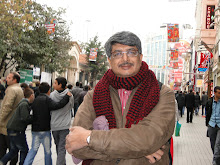An ancient civilization donned robes of a new-born nation at the stroke of midnight of 14-15th August 1947 hoping to wake up from its long slumber and make its “Tryst with Destiny”.
An ancient race that was spread over a vast multitude of kingdoms and jagirs woke up a new reality of a vast nation –
A population that owed allegiance to a central figure – the King and his family suddenly came alive to the vague concept of State and distant rulers.
People used to a certain form of governance for ages had to suddenly learn an alien concept of “Democracy” and come to terms with the niceties of debate and consensus building.
A rigid and feudal structure and a society divided along caste lines were confronted with the frightening possibility of having to live the rest of their lives practicing “Justice -
Till we attained our
A pan-Indian identity was as alien as sharing the same bench in a school with an “untouchable”. We grew up and limited our identity to our jagir - Kingdom or Province.
These and many contradictions came to the surface and in fact still keep doing so at repeatedly at regular intervals severely testing our faith and patience. Many wring their hands in despair and are convinced
I am more sanguine.
What we see today and what depresses and disturbs us should be seen in the light of what I have discussed above. The last sixty two years have been a process of overcoming these inherent contradictions, assimilating newer concepts, learning a new way of life.
We began as a group of nations and commenced the journey to meld together as a cohesive whole. Our society is grappling with many known and unknown currents and evolve it will. This belief is not based on foolish hope but on a study of human behaviour. Given the diverse background, a sense of identity and reconciliation will emerge in due course and all divisive and disruptive elements would quieten down and merge into the mainstream.
After all sixty years is just a small patch across a canvas stretching over tens of millennia or more.
Give
Edited to add:
Priyank made a very pertinent observation. We began an experiment six decades back that EU has just started a decade back and the complexity, religious and social diversity is much more that what EU can imagine. Let me add here - all this has been done without two world wars and tens of millions of human casualties. This is amazing and very creditable and we should be proud of ourselves.




